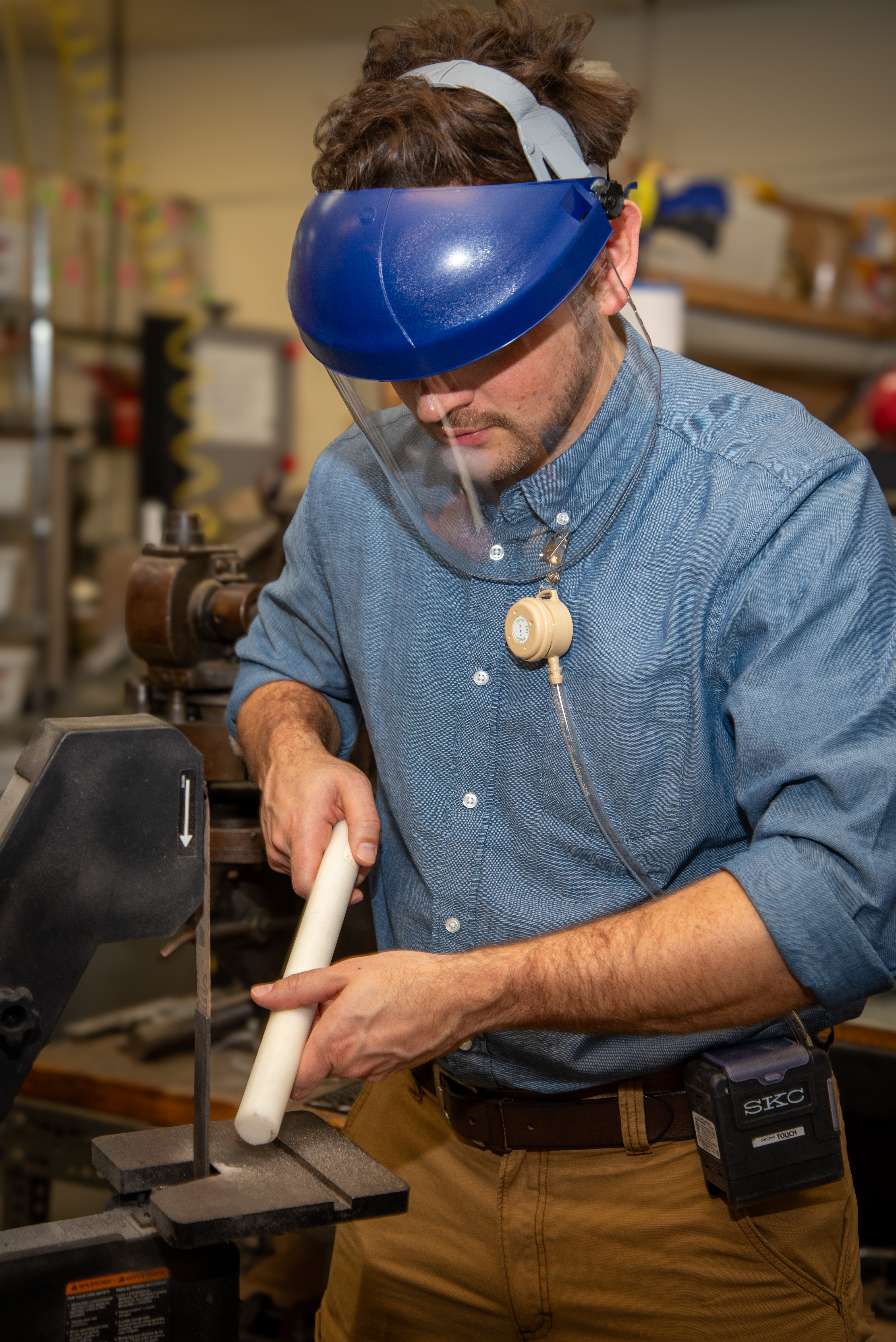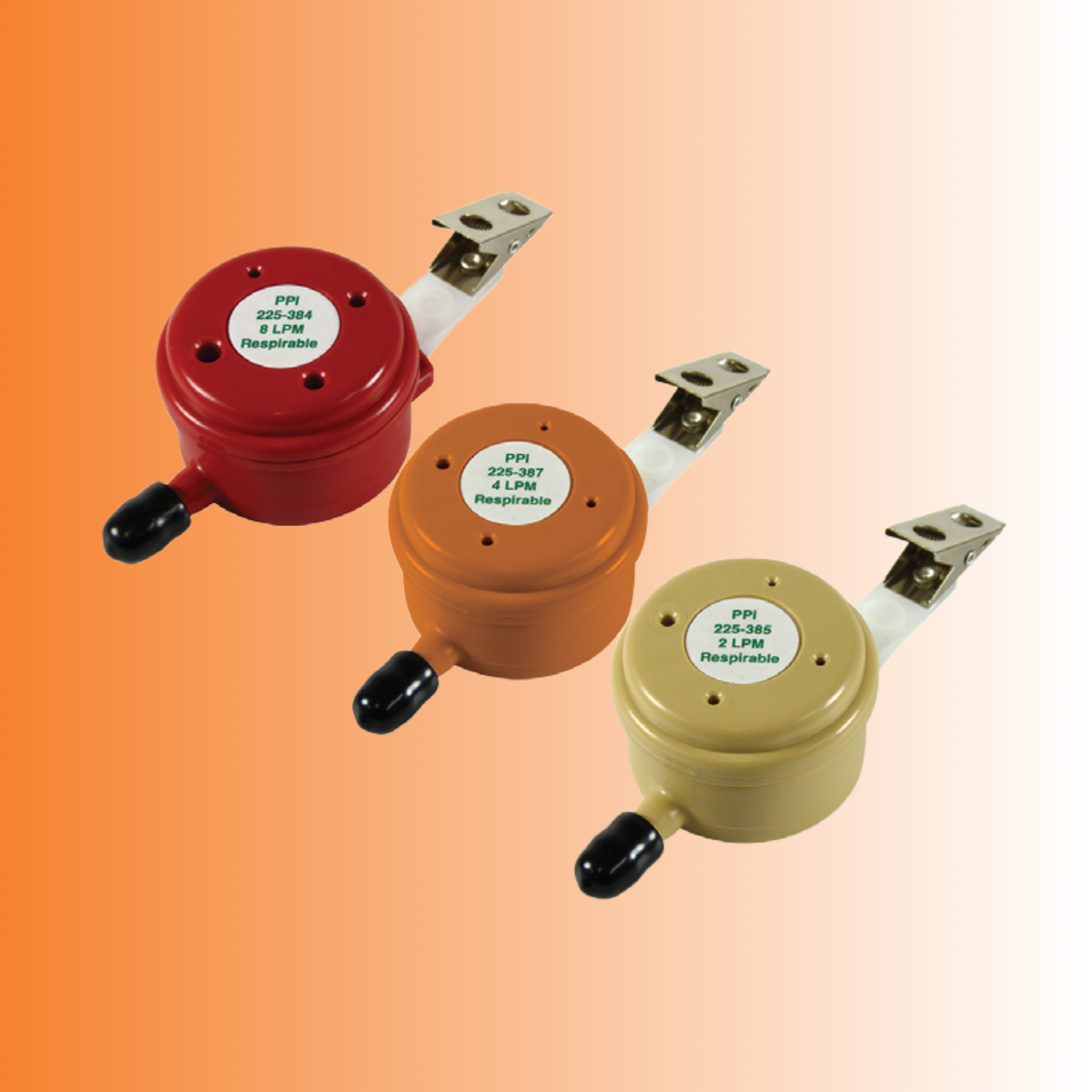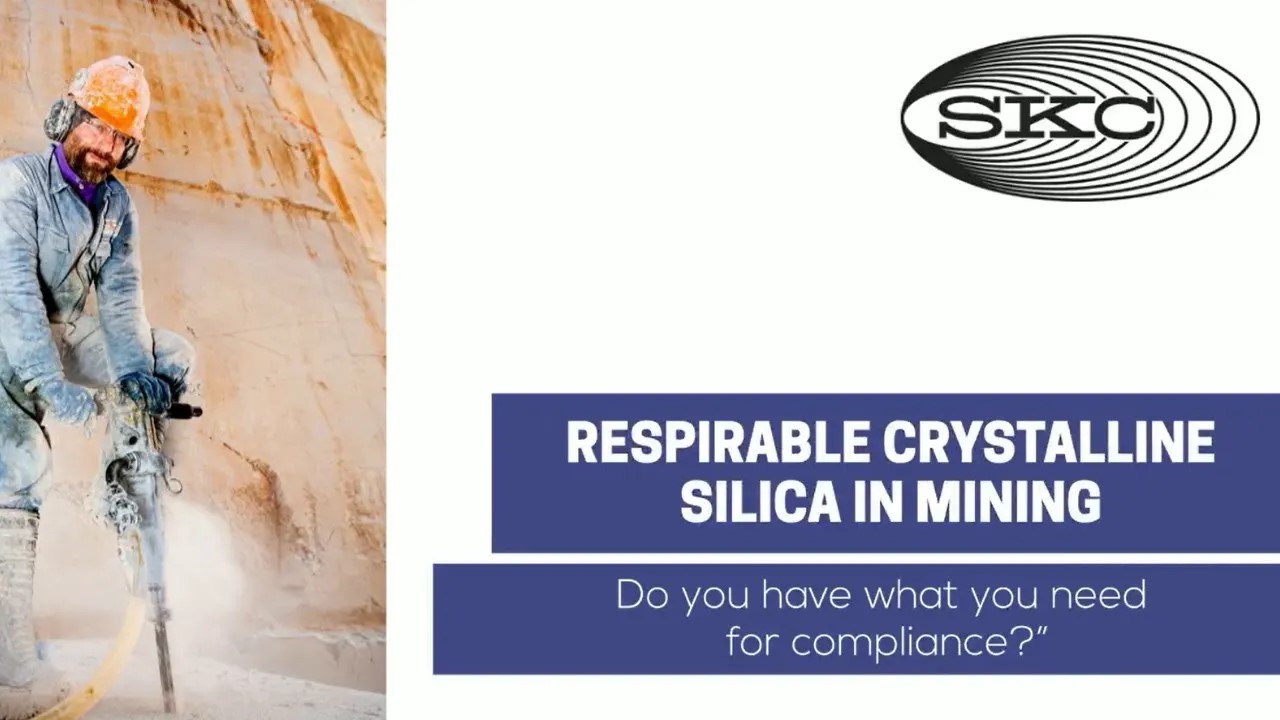The Original PPI Samplers
Listed in OSHA and MSHA FINAL SILICA RULES
Then: For years, cyclones were the sampler used to collect respirable dust and respirable crystalline silica (NIOSH methods 7500 and 0600 and OSHA ID-142). While cyclones got the job done with an acceptable level of bias, this study and others have shown that the sampling characteristics of cyclones do not follow the entire ISO 7708/CEN curve accurately. In addition, cyclones can be inconvenient for the worker to wear and are top heavy—prone to tipping, which can invalidate the sample.
 Now: Through careful design, the patented* SKC Parallel Particle Impactor (PPI) Samplers provide the most precise match to the ISO 7708/CEN criteria and overcome the tipping invalidation experienced with traditional cyclones. Impaction-based PPI Samplers each contain four parallel impactors. Each impactor’s nozzle has been precision engineered and machined for a cut-point that matches a point on the ISO 7708/CEN respirable dust curve for a close match over the entire criteria. The proof is in the PPI performance!
Now: Through careful design, the patented* SKC Parallel Particle Impactor (PPI) Samplers provide the most precise match to the ISO 7708/CEN criteria and overcome the tipping invalidation experienced with traditional cyclones. Impaction-based PPI Samplers each contain four parallel impactors. Each impactor’s nozzle has been precision engineered and machined for a cut-point that matches a point on the ISO 7708/CEN respirable dust curve for a close match over the entire criteria. The proof is in the PPI performance!
SKC PPI Samplers are listed in both the OSHA and MSHA Final Silica Rules as meeting the ISO 7708 criteria. Therefore, PPI Samplers meet requirements for compliance silica samplers in these regulations and are ideal for helping to keep your workers safe and safeguarding your operation against regulatory risks.
When you need highly accurate sampling of respirable dust or are performing compliance silica sampling, always choose original PPI Samplers for precision, accuracy, and ease.
*U.S. Patent No. 7,073,402
PPI Precisely Matches ISO/CEN Criteria
The Proof is in the Performance

How PPI Works

Each impaction-based PPI Sampler comprises four precisely designed impactors arranged in parallel and a collection filter immediately below—all within one sturdy sampler body (disposable anti-static plastic or reusable conductive aluminum). Air enters precisely engineered and machined impactor nozzles—each featuring a unique 50% cut-point to target a specific one-quarter segment of the ISO/CEN curve. As the airflow continues through the sampler, particles larger than each impactor’s 50% cut-point are scrubbed and retained by the pre-oiled impaction substrate within the impactors. The smaller particles continue to the standard 37-mm collection filter (backed by a support pad) in the sampler’s base plate. It is this filter that is sent to the laboratory for analysis. The sample can be analyzed gravimetrically or chemically.
Three Flow RateS Available

Three different models are offered, each to be used at a specific flow rate— 2, 4, or 8 L/min—provided by a constant flow sampling pump for high accuracy. This provides flexibility for you when tasks and work shift duration vary and you need increased limit of detection (LOD), especially for shorter sampling periods.
In addition, PPI models for thoracic particulate are available. Learn more.
Tipping/Sample Invalidation – PPI Samplers Solve this Cyclone Issue
Issue: As cyclone samplers operate, particles larger than the cut-point drop out of the airstream into a grit pot and the desired fraction collects on the filter inside the cassette attached to the cyclone. If the cyclone unclips from the worker’s collar and falls, the worker takes it off because it is heavy or getting in the way of a task, or the cyclone somehow gets inverted during normal post-sampling handling, the larger particles fall from the grit pot and onto the filter inside the cassette. This contaminates the sample, it must be voided, and you have to run the sample again. Even worse is if the cyclone inverts but nobody is aware, and the sample is sent to the lab for analysis.
 Solution: PPI Samplers are designed so that particles larger than the sampler cut-point are securely contained in its impaction substrate. You can be sure you have a valid sample with SKC PPI Samplers.
Solution: PPI Samplers are designed so that particles larger than the sampler cut-point are securely contained in its impaction substrate. You can be sure you have a valid sample with SKC PPI Samplers.





 Now: Through careful design, the patented*
Now: Through careful design, the patented* 


 Solution: PPI Samplers are designed so that particles larger than the sampler cut-point are securely contained in its impaction substrate. You can be sure you have a valid sample with SKC PPI Samplers.
Solution: PPI Samplers are designed so that particles larger than the sampler cut-point are securely contained in its impaction substrate. You can be sure you have a valid sample with SKC PPI Samplers.


